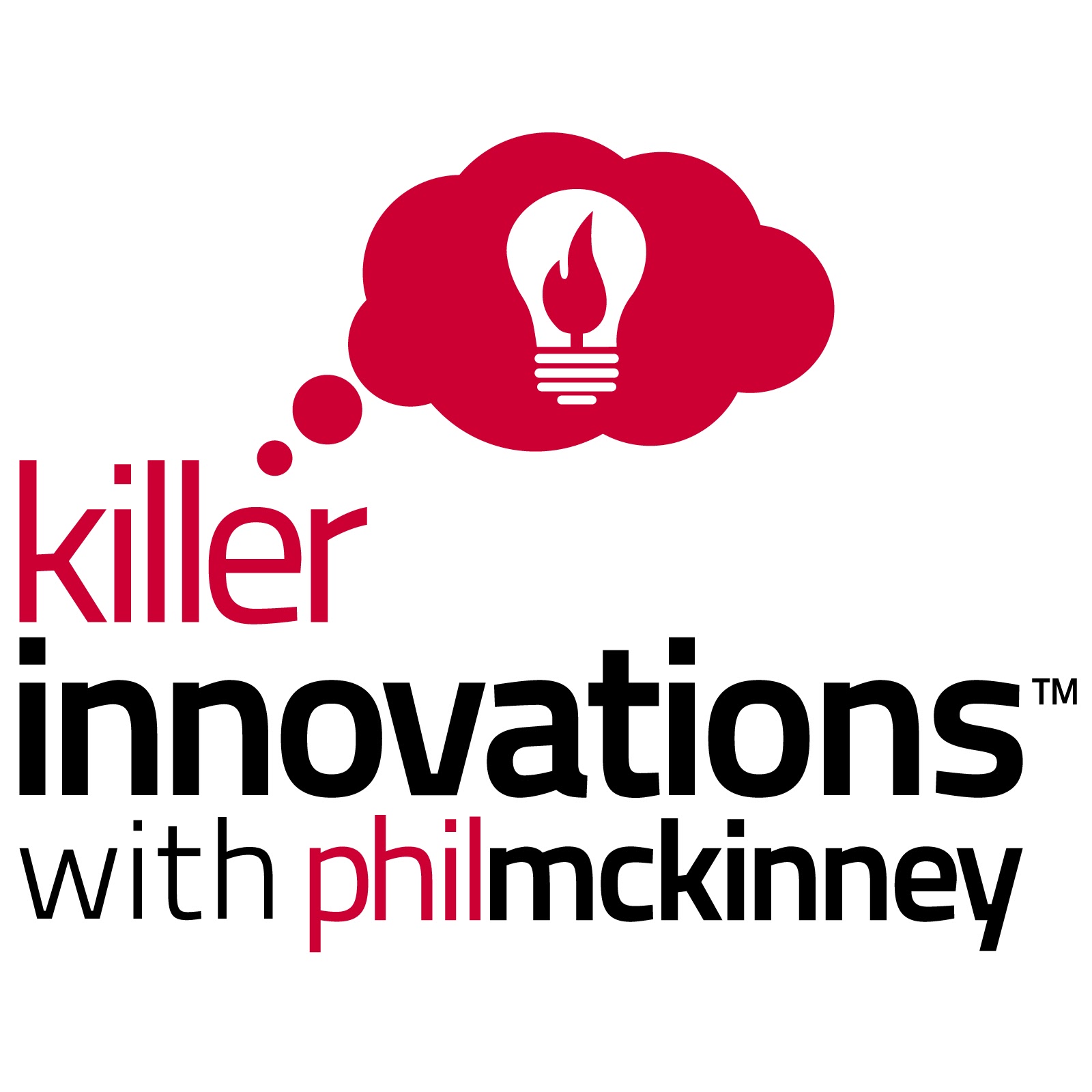
My Meeting With Elon Musk: Innovate Like A 5-Year-Old

Killer Innovations with Phil McKinney - A Show About Ideas Creativity And Innovation
Shownotes Transcript
When I walked into Elon Musk's office at Tesla in 2011, I knew I was about to see something remarkable, but I couldn't have predicted how mind-opening the experience would be. Elon Musk, known for revolutionizing industries through SpaceX and Tesla, has a way of questioning the world that feels almost childlike—but not in the way you might think. He roots his approach to problem-solving not an extensive knowledge of past achievements but by tackling challenges like a 5-year-old, unafraid to ask ‘why' until he reaches the core of an issue. Here's what I learned about innovation from my meeting with Elon Musk.
The Power of First Principles Thinking
What sets Elon Musk apart is his commitment to First Principles Thinking)—a method that deconstructs problems to their fundamental truths. Instead of relying on established ideas, Musk strips away assumptions and starts from scratch. His belief is simple: assumptions can limit innovation, while first principles allow endless possibilities. He often explains it like this: “The normal way we conduct our lives is reasoning by analogy… But with first principles, you boil down to the most fundamental truths and then reason up from there.”
3 Steps to First Principles Thinking
We can boil down Musk's approach into three actionable steps anyone can use.
Identify Your Assumptions: Challenge every “truth” and tradition associated with a problem. If you notice something is “always done this way,” ask yourself, “Why?”
Break Down to Fundamental Truths: Identify core, provable facts that can't be further simplified.
Build Up from Basics: Reimagine a solution based solely on these fundamental truths, ignoring all previous conventions.
My Experience: How Elon Musk Sees Beyond Assumptions
During our conversation about HP's military-grade rugged displays, I watched Musk break down assumptions about car interfaces. What began as a discussion about technology quickly turned into a reimagining of how drivers interact with their vehicles. For example, Musk questioned why dashboards needed physical buttons and considered the actual purpose of car displays—this ability to strip down assumptions allowed Musk to redefine what was possible for Tesla's interface design.
Rethinking Innovation Like a 5-Year-Old
Musk's thought process is more than just a strategy—it's a mindset. Think about how a 5-year-old constantly asks “why” to understand the world. Musk approaches challenges with a similar curiosity, seeing barriers as merely starting points for innovation. This is a reminder that breakthrough thinking doesn't require years of experience or knowledge; it requires curiosity and the courage to question what others accept as true.
Facing Resistance
One takeaway from my time with Elon Musk was his ability to anticipate pushback. “Government officials) will push back,” he told me, predicting resistance to his vision of touch-screen interfaces in cars. Thirteen years later, regulatory bodies are challenging touch interfaces, advocating for more physical buttons for safety. Musk's foresight shows that innovators often face institutional resistance when pushing boundaries.
How You Can Innovate Like Elon Musk
Applying first principles thinking is more straightforward than it sounds; you don't need to be a tech billionaire. Here are a few steps:
Start Small: Apply first principles to daily routines or small business processes.
Challenge Assumptions: Identify one routine task, repeatedly ask ” why, ” and strip it down to its core need.
Build from Basics: Create a new, more effective approach based on your answers.
Final Thoughts
What I learned that day in Musk's office wasn't just a new strategy—it was a reminder that the most significant innovations often come from childlike curiosity). By questioning everything, we open ourselves to a world of possibilities beyond what we currently accept as possible. So, the next time you face a seemingly insurmountable problem, channel your inner 5-year-old and ask, “What if we're thinking about this all wrong?”
To learn more about Elon Musk, listen to this week's show: My Meeting With Elon Musk: Innovate Like A 5-Year-Old).
.u026cd717793f609896d17c56d0e1c76c , .u026cd717793f609896d17c56d0e1c76c .postImageUrl , .u026cd717793f609896d17c56d0e1c76c .centered-text-area { min-height: 80px; position: relative; } .u026cd717793f609896d17c56d0e1c76c , .u026cd717793f609896d17c56d0e1c76c:hover , .u026cd717793f609896d17c56d0e1c76c:visited , .u026cd717793f609896d17c56d0e1c76c:active { border:0!important; } .u026cd717793f609896d17c56d0e1c76c .clearfix:after { content: ""; display: table; clear: both; } .u026cd717793f609896d17c56d0e1c76c { display: block; transition: background-color 250ms; webkit-transition: background-color 250ms; width: 100%; opacity: 1; transition: opacity 250ms; webkit-transition: opacity 250ms; background-color: #D35400; box-shadow: 0 1px 2px rgba(0, 0, 0, 0.17); -moz-box-shadow: 0 1px 2px rgba(0, 0, 0, 0.17); -o-box-shadow: 0 1px 2px rgba(0, 0, 0, 0.17); -webkit-box-shadow: 0 1px 2px rgba(0, 0, 0, 0.17); } .u026cd717793f609896d17c56d0e1c76c:active , .u026cd717793f609896d17c56d0e1c76c:hover { opacity: 1; transition: opacity 250ms; webkit-transition: opacity 250ms; background-color: #7F8C8D; } .u026cd717793f609896d17c56d0e1c76c .centered-text-area { width: 100%; position: relative; } .u026cd717793f609896d17c56d0e1c76c .ctaText { border-bottom: 0 solid #fff; color: #000000; font-size: 16px; font-weight: bold; margin: 0; padding: 0; text-decoration: underline; } .u026cd717793f609896d17c56d0e1c76c .postTitle { color: #FFFFFF; font-size: 16px; font-weight: 600; margin: 0; padding: 0; width: 100%; } .u026cd717793f609896d17c56d0e1c76c .ctaButton { background-color: #E67E22!important; color: #000000; border: none; border-radius: 3px; box-shadow: none; font-size: 14px; font-weight: bold; line-height: 26px; moz-border-radius: 3px; text-align: center; text-decoration: none; text-shadow: none; width: 80px; min-height: 80px; background: url(https://eadn-wc01-5964675.nxedge.io/wp-content/plugins/intelly-related-posts/assets/images/simple-arrow.png)no-repeat; position: absolute; right: 0; top: 0; } .u026cd717793f609896d17c56d0e1c76c:hover .ctaButton { background-color: #95A5A6!important; } .u026cd717793f609896d17c56d0e1c76c .centered-text { display: table; height: 80px; padding-left: 18px; top: 0; } .u026cd717793f609896d17c56d0e1c76c .u026cd717793f609896d17c56d0e1c76c-content { display: table-cell; margin: 0; padding: 0; padding-right: 108px; position: relative; vertical-align: middle; width: 100%; } .u026cd717793f609896d17c56d0e1c76c:after { content: ""; display: block; clear: both; } RELATED: Subscribe To The Newsletter and Killer Innovations Podcast)
